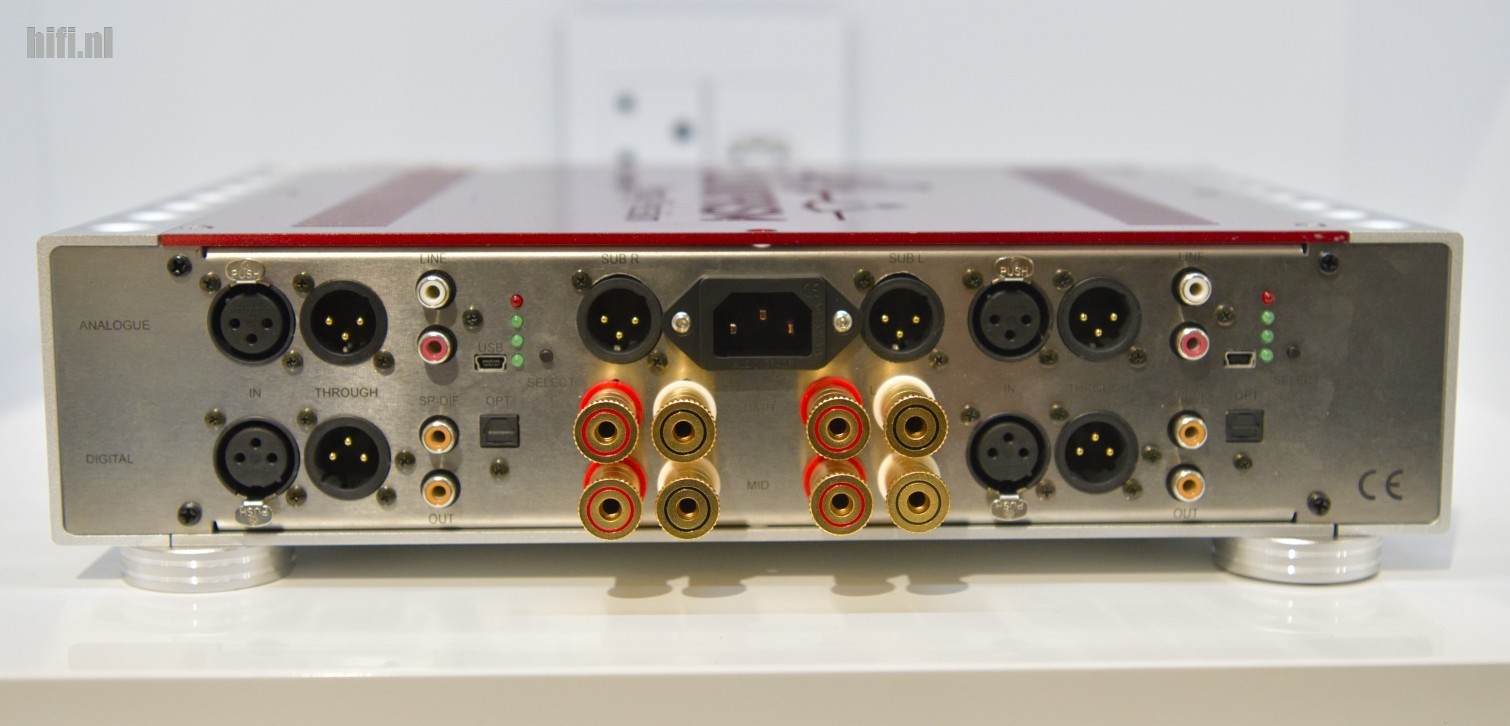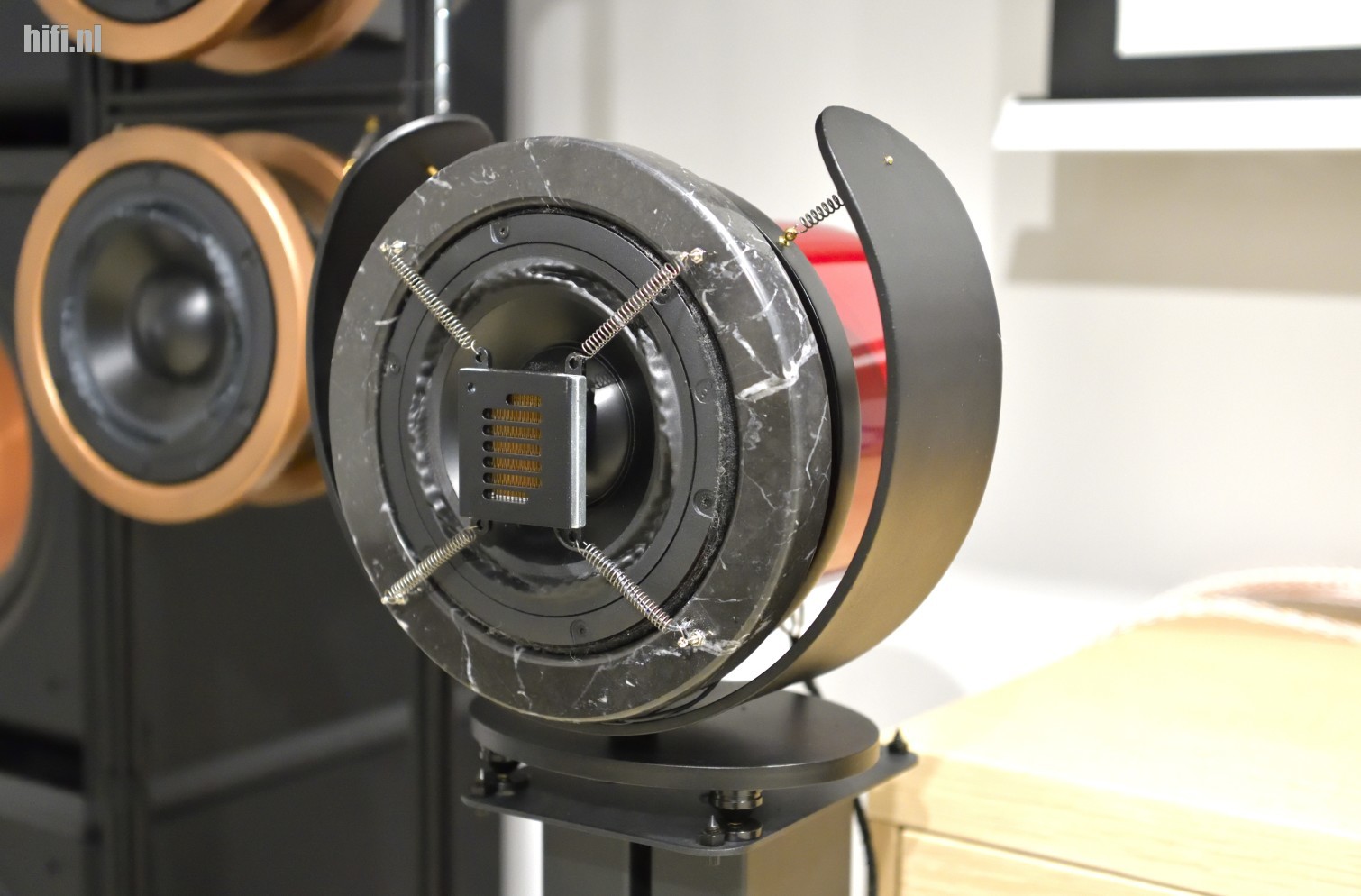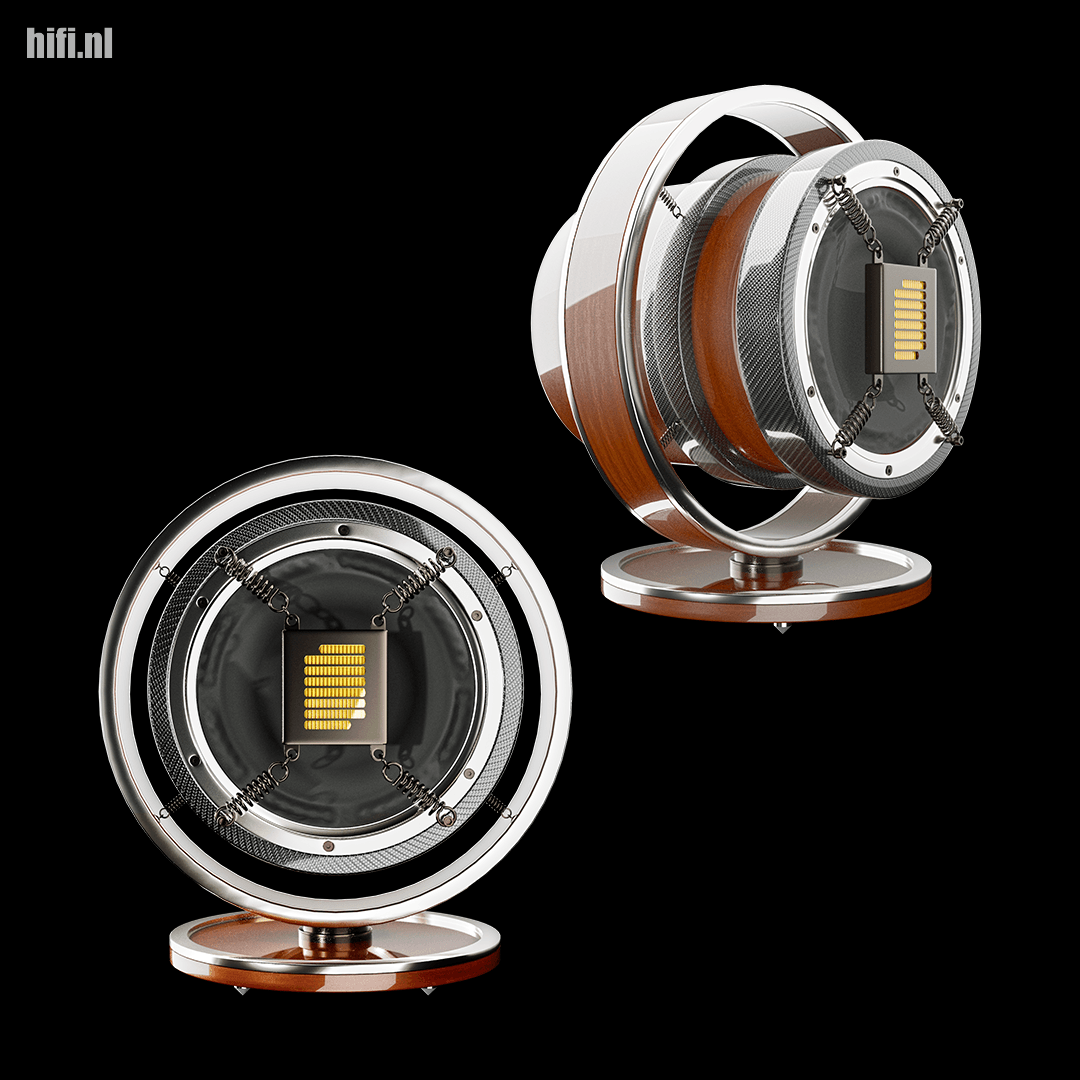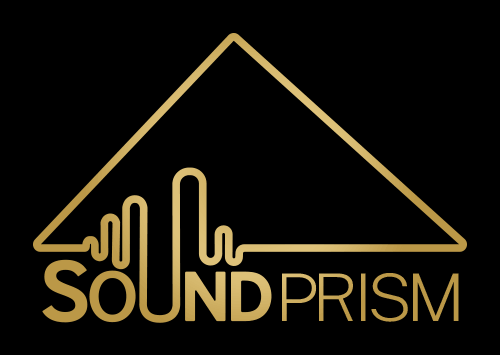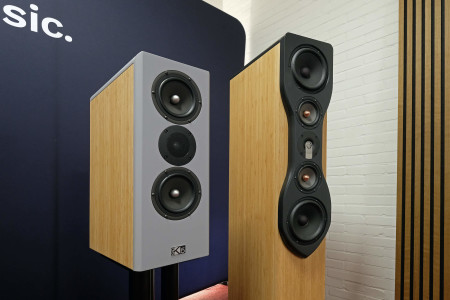
This review is intended for anyone who aspires to live sound. Those who seek their own sound have an easy life. You can then buy everything, including a large equalizer. Such a thing that was popular in the eighties and was a must-have in the famous audio rack due to social pressure. It was the culture of the time. So, get busy with those 31 sliders and create your own sound. Those seeking authentic, natural, and live sound may continue reading and get acquainted with SoundPrism.
The advantage of spending some time in the hi-fi world is that you start to see relationships between sound-related phenomena. This can help to understand long-standing issues. Your author has long been searching for the factors that influence the realistic sound of an audio system. The impression is that we have lost that to some extent. Much hi-fi sounds smooth, slick, and polished. The height of misery is the comment on some phono cartridges that they have a nice silky sound. The same applies to many so-called audiophile recordings. Photoshopped by various digital enhancers in the studio and removed from how music sounds live. It is sometimes prettier than reality. It seems that part of the industry consciously targets a large median of listeners who cannot be knocked out of their comfort zone of a mainly pleasant sound experience. That is commercially driven and used to be called "vertrossing" (in Dutch) in the past. Minorities with different interests and further developed tastes and listening skills are then left out.
Realism
For those delving deeper into hi-fi, there are devices and systems available that sound more realistic and move music closer to a live experience. Your author has long been searching for the factors that play a role in achieving a more realistic sound. A striking finding is that achieving a more realistic sound can sometimes be caused by a single aspect within such a system. This could be a phono cartridge, a specific converter, a turntable, an amplifier, speakers, and sometimes a recording that exhibits a dose of realism.
The secret of a realistic recording?
An example of the latter occurred a few years ago. The phone rang on a Friday evening. A well-known band asked if a recording could be made on Saturday of a single song, which had to be in Germany by 5:00 p.m. Then, early in the morning, you grab twenty microphones, twenty stands, and a digital 48-track recorder under your arm and rush to the agreed recording location. Set up, levels adjusted, and a 6-minute sound check.
This band consists of professionals. All conservatory-trained. Unlike amateurs, they stand up and immediately deliver a flawless performance. No hassle with missed notes, wrong tempos, late entrances, or fake-sounding violins and other nonsense.

Then back to the studio. The multitrack mixed to stereo, no editing and digital enhancements, but the mix put on a CD and delivered to one of the band members who arrived around 4:00 p.m. The recording has been listened to many times. The fascination is that it sounds very realistic. Often even in systems where nothing special has been done to achieve a more realistic sound. Curious, because there was no intention to make a realistic recording.
Also, the choice of a single phono cartridge in a system can significantly increase the level of realism. Countless cartridges, arms, phono preamps, and turntables have been experimented with here over the years. Some of these cartridges, both vintage and modern, deliver a more realistic sound. More vivid, tangible, with more focus, more energy, neutral, and giving the impression that real live instruments are playing.
Multiple factors for realism
The finding is that in a complete hi-fi system, a single component can often achieve a much more realistic reproduction. How is that possible, and what logic lies behind it? How is it that the made recording sounds so real and lifelike? It also works on the speaker side. There are simply a number of speakers that present a much more realistic sound. One of those experiences occurred while listening to a professional active system from PMC. Plain black, two meters tall, intended for a studio, not fancy for the living room, and powered by a simple Pro-Ject turntable.
A record of a girl band was playing. It sounded lifelike. Tangible, with tremendous energy, and like a group in a studio sounds. It was breathtaking.
From all these experiments and experiences, it is not yet possible to compile an ultimate guide on what exactly to do to get a more realistically sounding system. Yet, it is possible to see relationships and in some cases understand and explain why the sound then sounds much more realistic. It is clear, however, that in the world of hi-fi, we often have drifted away from the sound as it sounds in reality.
The audiophile ideology has contributed significantly to a risk-free, perfect, polished, and more beautiful than live experience. Yet, ultimately, you want to listen to music. Experience through your sound system how music (as much as possible) sounds in a live situation. There is certainly still a difference between what sound systems do and how reality manifests itself. Systems can, in the perception of your author, come closer to how music, voices, and instruments sound in reality.
SoundPrism
SoundPrism has been building active loudspeaker systems for many years. Many experiences with active loudspeaker systems have shown that these types of loudspeakers often come closer to realistic reproduction. It is more difficult to achieve this with many passive loudspeakers, but this is not to say that it cannot be done. If successful, such a specific loudspeaker usually has passive filters of very high quality. Advantages of active systems are that the internal amplifiers are tailored to the different drivers, no loudspeaker cables are needed (cables inherently degrade your sound), and problems with passive filters are absent.
In an active system, there is less intermodulation distortion. This is because distortion in an amplifier remains limited to the driven driver. The harmonics of the distortion are then not reproduced by other drivers, as in passive systems. With active filters, you have less distortion and much more control. For example, you can incorporate time delay. This allows you to achieve symmetrical directivity in the lateral plane and also correct phase.
Active internal filters, as used in active loudspeakers, also offer steeper filter slopes, good required components are more affordable than the oversized coils, resistors, and capacitors in passive filters, and you can perfectly fine-tune such a loudspeaker with them. The extensive configuration is even stronger when using digital filters (DSPs). It is also possible to build an active system with external filters and amplifiers. You then have almost all the advantages of the active principle, but with the disadvantages of the necessary loudspeaker cables.
SoundPrism has been building active systems for many years, almost entirely based on customer specifications. To demonstrate, there are of course a number of basic models. From small to huge line arrays of two meters high. But within a few reasonable limits, the customer can choose extensively between materials, colors, shapes, and subwoofers. In essence, Soundprism works with class D amplifiers and built-in DSPs. With the help of these digital magic boxes, Soundprism can perfectly adjust the system to the listening room and possibly to specific customer preferences. This service is included with the purchase. In principle, each system comes with the necessary amplifiers, DSPs, and all cables. The customer then provides a source.
The amplifiers accept digital input and analog input. The Soundprism systems always consist of panels for mid and high frequencies and one or more subwoofers. The customer has a free choice regarding the subwoofers.
SoundPrism Cumulus F1
Cumulus represents an extremely flexible loudspeaker platform with a basic unit consisting of a suspended loudspeaker arranged in a half circle, built with an ATM driver, a mid/low driver and a passive radiator. These three units are housed in a cylinder. The cylinder is suspended with springs in a metal half circle. It resembles a bit of a gimbal suspension. Thus, there is virtually no enclosure. So, no resonances, no coloring, no transmission of vibrations to the floor, and vice versa. This results in a purely neutral sound. The smallest imaginable system consists of two of these Cumulus units, which can be mounted, for example, on a very elegant stand designed by Soundprism. Because a single Cumulus can reproduce down to 30 Hz, a subwoofer is not always necessary, but the advice is to supplement with one or more subwoofers.
Thinking big
Depending on the customer's preferences, multiple Cumulus units can also be arranged in a frame. It is then possible to create a line array, for example, 2 meters high. Subsequently, two woofer towers can also be built. The entire system is then driven and controlled by active DSPs. The smallest Cumulus system integrates seamlessly and almost invisibly into the living environment. It does not resemble the standard obligatory floor stander, which often scores very low on the WAF (Wife Acceptance Factor). Finished in carbon, red piano lacquer, 18 karat gold, or whatever the customer desires, these units resemble more of an art object. As a customer, you always have a unique system at home. It is also scalable for someone who may move to a larger space in the future.
Setup
In the listening room, the smallest Cumulus configuration was set up and equipped with a single subwoofer. This setup also played with great success at the recent MASTERS EXPO in Amsterdam. The attendees were highly impressed. Etienne Heemskerk provided a basic setup here from a laptop, which is connected to the DSPs in the amplifier. First, the optimal placement for these speakers was determined by myself using test signals. In the listening room, there is a rapid succession of systems. Therefore, system setups usually reach around 80%, which provides sufficient insight for a review. If there were a fixed system, you would obviously continue tuning. But the listening room does not have a fixed system. After playing a couple of fragments, your author requested a small correction. That's instant work from the laptop. You have full control over filter slopes, crossover frequencies, amplitude, filter type, and time behavior. You can fully fine-tune and perfect. This is harder to achieve with passive speaker systems.
Acoustics
It was not necessary for Etienne to make many corrections. The listening room has excellent acoustics. With an analyzer available here, you can, among other things, conduct an RT60 test. On the screen, you see a graphical figure indicating the reverberation time of each frequency.
This is the so-called decay curve, presented as a histogram. If the reverberation time at low frequencies is too long, you get a room that sounds very "hollow." The optimal decay time is the same for all frequencies and depends on the dimensions of the room. For a medium-sized room, it's around 1.5 seconds.
Content
For listening, some system-killing content was used. These are compact discs and vinyl records with critical and distinctive recordings. Everything that's not good about a system becomes immediately apparent, and such a hi-fi set goes completely over the top. CDs were played from a professional transport, connected to a professional converter. Not available on the consumer market, but intended for studios and with exemplary performance. Vinyl records were played on a professional turntable. Based on the aforementioned research, an ideal combination was made here between cartridge, tonearm, and phono preamplifier. So, no soft, too warm, or overly smooth sound, but a convincingly realistic analog sound. The sources here come with a completely neutral sound.
Listening
Listening to the SoundPrism system means a confrontation with a completely black background. This indicates an enormous dynamic range with a noise floor that is very low. So, you literally perceive the softest and most subtle sounds. It's not a hyped detail because the high frequencies are boosted by 3 dB. It's entirely natural.
It's fascinatingly evident on "sky-cut," the SACD by Turkish cellist Ayse Deniz Birdal (trptk TTX 0002). You don't come across many recordings with such a wealth of extremely subtle sounds and details. Many systems don't reproduce this. With Soundprism, however, it works, just like it does with ATC, and for a slightly higher investment, with the new Magico S3.
Speed
The most beautiful and coveted thing that this Cumulus system brings is pure realism. This is caused by a number of factors, including the aforementioned detailing and focusing. It's then the spectacular speed at which, among other things, percussion and piano tones sound.
In the experience of your author, this goes much further than with other systems. Percussion sounds lifelike. This can be clearly heard with Wer Weis, a track on "Songs for Laila" by the Klaus Koenig Jazz Live Trio. Music that can sound like a dishcloth on lesser systems, but here emerges as if you were there. Those piano strikes come out superbly on Elegia, played on two 5-meter Steinway grand pianos by Brad Mehldau and Kevin Hays.
It leads to an almost real experience. The sound of the pianos, the speed of the strikes, and also because of the large stage that this set presents. For a relatively small system, the stage can be substantial. Especially with two subwoofers, it creates a wall of sound.
Dynamic Range
Dynamic range is not only determined by the speakers but also by the sources. The sound from the (SACDs) and vinyl records is incredibly dynamic. Regarding the turntable, this is, among other things, caused by a favorable combination of a tonearm and a cartridge. In hi-fi, you always search for ideal matches between the components that make up the system, and this match is from heaven.
The track Give 'M Time, recorded in 1975 in Los Angeles by the Count Basie Orchestra, should be started at a very low volume. After about two minutes, the entire orchestra goes wild. That's such a huge dynamic leap that the windows rattle and unsuspecting co-listeners need resuscitation. The SoundPrism system reproduces this without a hint of distortion or congestion. The sound remains neutral, and it comes across very naturally. It's not a record you can play on every system. However, it's suitable if you want to see the cones flying around the room during the launch of smoke plumes from the power amplifier. The SoundPrism system executes this playback flawlessly, without the aforementioned less audiophile phenomena.
The Holy Grail?
It's still not attainable with audio. You can spend two million on a hi-fi set, and it will still be a compromise, although a handful of systems come pretty close. With some knowledge and, for example, this SoundPrism, you can get quite far. After setting up this system and listening for a while, things come to light that were not noticed before. There was a reason to make two minor adjustments to the frequency curve. Etienne hadn't left the computer behind to make those adjustments.
With the help of a DSP, you can solve many problems. You can create any sound you want. The consumer is free to do so, but here it must sound live. To make this adjustment, two Pultec EQPs (Pulse Techniques) were included in the analog lines. It's a piece of cake to correct quickly. You hear exactly what needs correcting. It then sounded as it should. The reader now has emotions about how one could know such a thing, but if you hear a live Jim Redgate (guitar) and then a recording of it later, they must sound very close in terms of sound and spatiality.
Balancing with frequency bands
When you make a change in one frequency band, it always affects another band. It was an essential but subtle change. You can also achieve this using the DSP of the Soundprism system. During the setup of the system and after the initial tones, your author immediately wanted an adjustment, which was made by Etienne in the DSP. Logically, the DSP was still programmed to make the system sound good in a slightly different acoustic environment. That naturally worked less effectively here in the listening room.
The change mostly involved an adjustment in tone. The art is to do that without compromising other properties such as dynamics, definition, space, contrast, and the sublime speed.
Epilogue
Your author has listened to Soundprism's larger active systems before. There are many advantages to these Soundprism systems, such as the enormous flexibility in design, execution, and materials. A system can be delivered for a small apartment, but also one that can build up enormous power in a medium-sized theater hall.
However, the greatest merit of these systems is their realistic reproduction. Sound that comes close to a live performance is wildly attractive. Modern hi-fi systems don't always come close to a naturally sounding live sound. A big part of the secret lies in the active character. You can take another step by also looking for recordings that sound more live, such as Zoltan by Young, Shaw, Henderson, and Jones on Blue Note vinyl. Many years of experimenting with turntables, cartridges, and tonearms have taught that you can make a turntable sound analog and live. This is different from what many turntables do and sounds more like a form of highly perfected digital sound. To maintain nuance, it must be noted that you can also achieve live sound with passive speakers. That's tricky. You have to make very deliberate choices and know exactly what you're doing.
A challenge is to calibrate an active system properly. Experience has shown that such systems often sound too bright with a hissing high-frequency response, reminiscent of a leaking valve in a high-pressure air line. You need very good listening skills and a good concept of how live music sounds. This knowledge is present in the people at Soundprism, and you get it for free as a setup service when purchasing a system. Furthermore, there is still room for experimentation with subwoofers. Two units provide an even better stereo image, and the Soundprism system can be calibrated to virtually any available subwoofer. There are also a few tricks for adjustment that are not disclosed here. Presets can be created with the system. For example, to listen to sound in a movie, compensate for someone playing 78 rpm records, or create your own sound.
The Soundprism Cumulus F1 system is visually very attractive and hardly noticeable in a living space. It's really something different from the old and rectangular floor-standing concept. The enormous free-standing and powerful 3D sound image requires you to explain to visitors that this is truly caused by those inconspicuous cylindrical speakers, which resemble a scaled-down version of the Rolls-Royce RB211 jet engine. That enormous natural, deeply detailed, freely hanging in-room, and high-contrast stage has stolen your reviewer's heart.
SoundPrism Cumulus F1
11.995 euro | www.soundprism.nl


